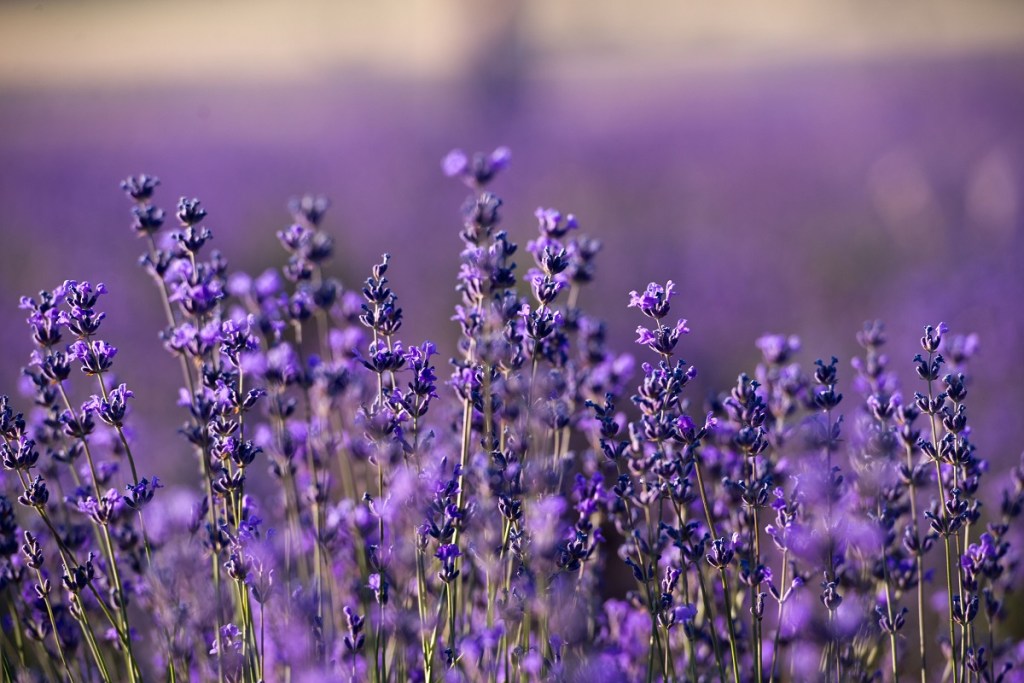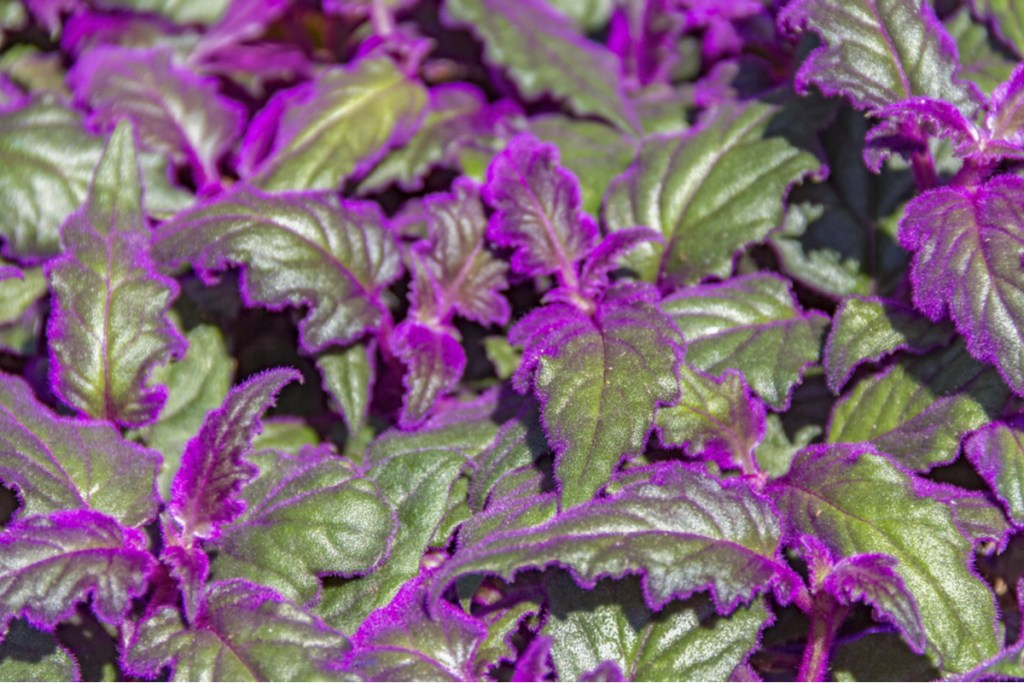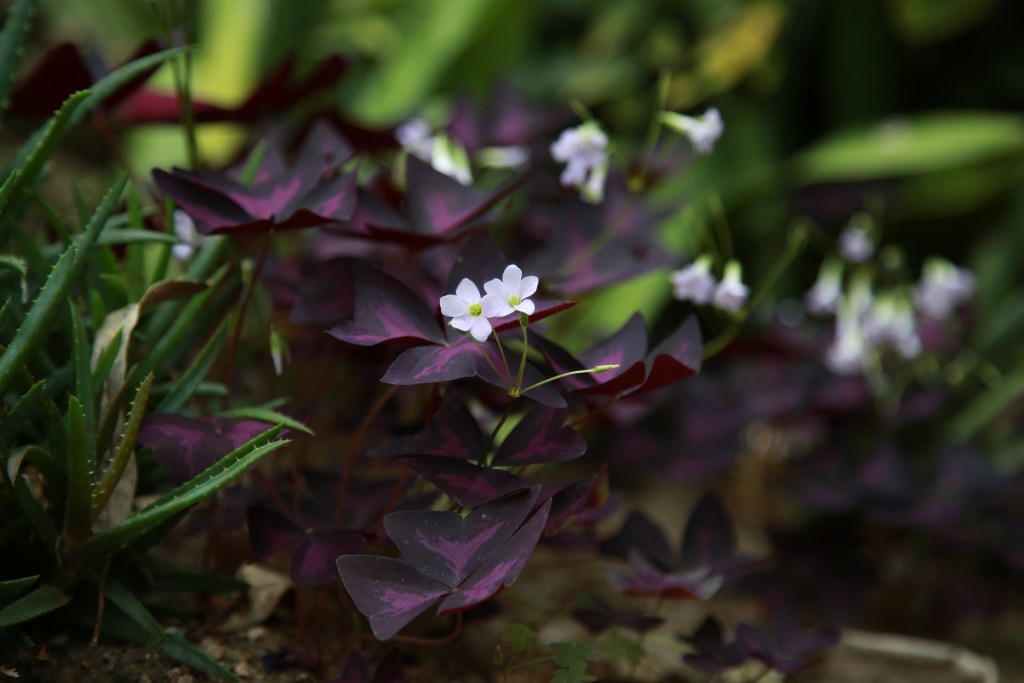To bring a color that signifies elegance and new beginnings into your garden, incorporate purple plants into your landscape. As you furnish your patio and yard at the start of the year, purple plants will infuse your space with a sense of calm. For flower bed layering, purple blooms also provide your garden with bold, yet not-too-overwhelming pops. To find the most beautiful purple plants out there and learn how to care for them, read about our top purple plant picks ahead.

Lavender
We couldn’t write a list about purple plants and not include lavender! Lavender is an incredibly hardy plant that’s typically perennial in climate zones 5 through 9. Its delicate purple blooms and calming fragrance are highlights of its appeal, but they aren’t the only ones. Lavender is also an easy plant to take care of. It grows prolifically and is incredibly forgiving with occasional bouts of neglect. It appreciates full sun and well-draining soil for lush expansion across your garden bed. You only need to water it when its soil feels dry—there’s not much need to fertilize it, as mixing in compost when you first plant it should be sufficient.
Forest pansy
In the fall, the forest pansy features a warm, red-orange color. But come springtime, it’ll flaunt pansy-like flowers that are a pretty lilac color. It does have specific needs, however. Doing best in climate zones 5 through 9, this plant will thrive in bright direct light and weekly watering. The forest pansy should be situated in a place where it can’t move around too much — saplings do best with structural support.

Purple passion plant
With velvety leaves covered in purple hairs, this foliage plant from Southeast Asia will certainly add a pop to your patio in zones 6 through 9, though many people also keep it as a houseplant. As long as you don’t overwater it, it should last you a good two to three years. Its pinkish-purple color makes it an ideal plant for spring — in fact, or prefers mild spring temperatures around 60 to 70 degrees Fahrenheit. With this plant, more sunlight will deepen its brighter purple color, but direct light can also cause it to wilt and burn. To encourage growth, pinch the ends. Cut the flowers when they bloom, as they can become quite smelly.
Lavender Pebbles
For a light wash of purple color, add Lavender Pebbles, or Graptopetalum amethystinum, to the succulent arrangement in your garden. This cheerful plant is just what it sounds like, coming in chubby oval shapes that can fill out spaces next to your echeverias, crassulas, and hens and chicks. Like most succulents, it’s relatively low maintenance, but it does best in full sun — the more light you can give it, the more prominent its color will be.
Hydrangea
Hydrangeas come in all kinds of colors, but a few trademarked types flaunt lovely washes of purple — think, Let’s Dance® Rhythmic Blue®, and Wee Bit Grumpy®. You can also experiment with your soil pH to get the color you want — acidic soil can make your hydrangea purple or blue. The big, round flowers make a statement addition to your flower garden. Care for your hydrangea in moderation since it can get sick with too much or too little care; it prefers medium watering and ample shade to thrive.
Tradescantia zebrina
The tradescantia zebrina can be the gift that never stops giving. This stunning plant features silvery leaves with stripes and a deep purple underside. With sufficient light and moist soil, it can keep pushing out new leaves. Native to Mexico, it’s hardy in climate zones 9 through 11, where it won’t freeze in the winter. That said, this tradescantia can also be kept indoors in most places as a stunning houseplant year-round; it looks especially stunning trailing from hanging planters.

Oxalis triangularis
The oxalis triangularis, aka the false shamrock plant, resembles violet butterflies. It can be grown outside in zones 6 through 11, or be kept indoors or as annuals in other places. It makes for a particularly cheerful plant during the spring, during which you’ll likely find it in grocery stores. Like prayer plants, it folds its leaves at night and opens wide in the morning. To grow it from scratch, you can simply shove bulbs into the soil. Inside, this plant may go dormant every few years, so don’t fret if the leaves look dead. Hold back on watering — when you see a leaf pop up, start watering again.
If you’re in search of a pop of color that’s subtle yet statement-making for your garden, consider picking out vibrant purple flowers and foliage plants. From the classic lavender flower to Lavender Pebbles, your options are wide-ranging, no matter your budget and preference. You’ve got everything from low-maintenance succulents to blooms that might require a little more care. Whichever purple plants you choose, you’ll be able to add a refreshingly cool color to your garden with them.
Editors' Recommendations
- Everything you need to know about choosing the best rocks for landscaping
- 6 tips you should keep in mind when building your own drought-tolerant garden
- Grow your indoor or outdoor garden and support these Black-owned plant shops for Black History Month
- Do you live in climate zone 10? Here’s our guide to choosing the perfect climate zone 10 plants
- What to do with an old Christmas tree: 6 ways to recycle your tree after the holidays





